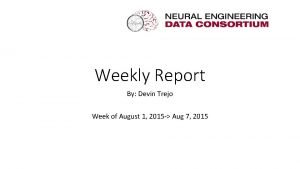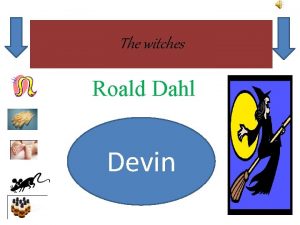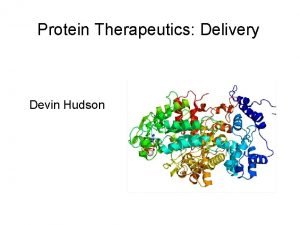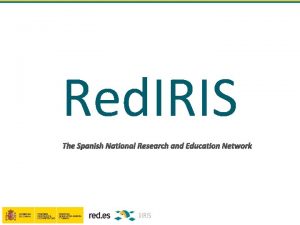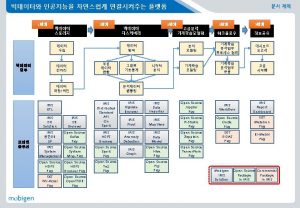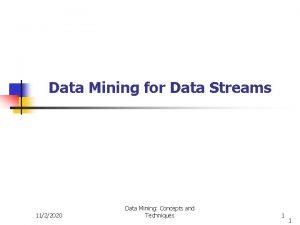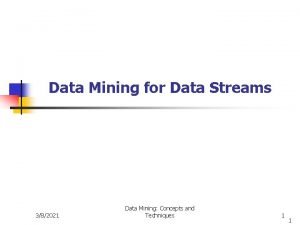Iris Data Mining Project Devin Wright JoeDocei Hill

















- Slides: 17

Iris Data Mining Project Devin Wright Joe’Docei Hill

Project Background 1. Size of data: 150 records, 5 attributes (ID, Sepal Length, Sepal Width, Petal Length, Petal Width), 3 classifications (Iris-setosa, Iris-versicolor, Irisvirginica) 2. Properties of the attributes: Continuous 3. Missing values: None 4. Are all attributes used or only a subset? : Excluded ID because it’s not informative 5. Other important information: n/a

Data Mining Task #1 Question: How does the Iris data react when ran through the kmeans algorithm? Methods applied: kmeans algorithm

Data Mining Task #1 (cont. . . ) Results Run samples

Data Mining Task #1 (cont. . . ) Results Computed averages

Data Mining Task #1 (cont. . . ) Informational graphs

Data Mining Task #2 Question: How does the Iris data react when ran through the hierarchical algorithm with several different distance metrics and linkages? euclidean cityblock sqeuclidean cosine seuclidean Complete linkage

Data Mining Task #2 (cont. . . ) Results 3 Linkage clusters per distance metric

Data Mining Task #2 (cont. . . ) Results Dendrograms

Data Mining Task #2 (cont. . . ) Question: Which yields better results? Kmeans or hierarchical with the euclidean distance metric? Average overlap in Kmeans cluster: 39% - 43% Average overlap in Hierarchical with the euclidean distance: Complete: 54% Ward: 32% Answer: Hierarchical with the euclidean distance and ward linkage

Data Mining Task #3 Question: When using the Naive Bayes algorithm, does random versus semirandom training sets greatly affect the accuracy? Methods used: Naive Bayes algorithm

Results Random Total right: 53 Out of: 60 Accuracy: 88. 33% Semi-Random Total right: 52 Out of: 60 Accuracy: 86. 67% Interpretation No but kind of K-Fold shows that it does matter

Data Mining Task #4 Question: How do the runs of Naive Bayes compare to the various kernel runs of SVM (linear, poly, rbf, sigmoid)? Methods used: SVM algorithm

Results SVM beats Bayes in all kernels except Sigmoid. SVM is probably better in the long run except… The preprocessing is a pain compared to the easy use of Naive Bayes with similar results

Data Mining Task Conclusions Result comparison with Kaggle 90% of Kaggle python submissions are for visualizations Very little data mining code Challenges Interpreting results Fully understanding algorithm Visualizing Results (Thanks Kaggle!)

Data Mining Task Conclusions Additional tasks to win competition? We do not believe there is much of a competition for this dataset since there seems to be no real problem to solve

Questions?
 Mining complex types of data
Mining complex types of data Iris data mining
Iris data mining Mining multimedia databases in data mining
Mining multimedia databases in data mining Strip mining vs open pit mining
Strip mining vs open pit mining Chapter 13 mineral resources and mining
Chapter 13 mineral resources and mining Difference between strip mining and open pit mining
Difference between strip mining and open pit mining Text and web mining
Text and web mining Devin vrana
Devin vrana Devin fra
Devin fra Devin
Devin Devin trejo
Devin trejo Timmy turner schizophrenia
Timmy turner schizophrenia Devin schultz
Devin schultz Devin j stone married
Devin j stone married Grandma from the witches
Grandma from the witches How do you say devin in spanish
How do you say devin in spanish Devin hudson
Devin hudson Data reduction in data mining
Data reduction in data mining










